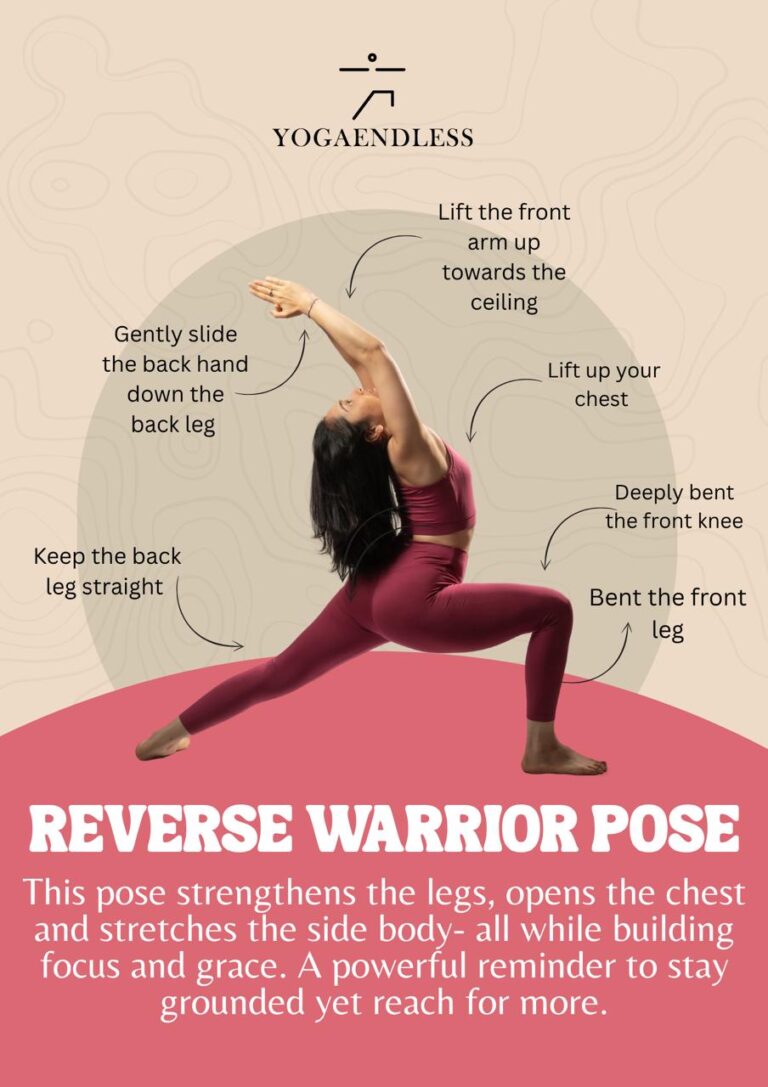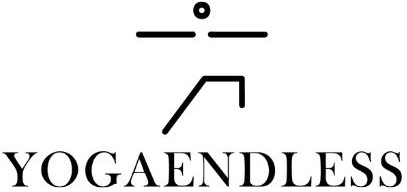Reverse Warrior (Viparita Virabhadrasana): Grace Meets Strength
Step into your power with Reverse Warrior, a yoga pose that melds elegance with endurance. Also called Viparita Virabhadrasana, it’s more than just a backbend—it’s a celebration of balance, resilience, and mindful presence. This pose builds on the warrior’s strong foundation and opens your side body, heart, and breath in a beautiful arch.

What Is Reverse Warrior?
Reverse Warrior reverses the forward-facing stance of Warrior II, transforming the fierce mindset into a serene, flowing stretch. While Warrior II grounds you, Reverse Warrior invites space—floating your torso back, up, and wide—emphasizing lateral flexion over backbend It’s commonly known as Side Warrior, reflecting the balanced arc of the chest and spine
Step-by-Step Instructions
Begin in Warrior II
Stand with feet wide apart; front foot turned 90°, back foot angled 45°. Bend front knee until it aligns over the ankle .
Ground Your Legs
Press evenly through both feet: big toe mound of front foot and outer edge of back foot. Keep the back leg strong, front thigh parallel to the earth .
Engage the Core
Draw the navel inward to protect the low back, lift the chest, and keep hips square .
Lift and Reach
Flip the front palm upward. Inhale to reach the front arm up and back, arching gently through the side body .
Support with Back Hand
Exhale as you drop the back hand onto the back thigh or calf for light support—don’t lean heavily.
Breathe and Gaze
Hold for 3–6 breaths, looking up toward the lifted hand, feeling the length in your side body .
Exit Gracefully
Inhale to return to Warrior II, then step feet together into Mountain Pose. Repeat on the opposite side.
Benefits of Reverse Warrior
Opens the Side Body & Chest: Deepens the stretch along intercostal muscles, enhancing breath capacity .
Strengthens Lower Body: Engages quadriceps, glutes, calves—and supports joint integrity .
Improves Spinal Flexibility: Gently mobilizes the spine, adding suppleness and alignment.
Enhances Balance & Stability: Requires rooted footing and engaged core—perfect for mindfulness.
Relieves Stress & Fatigue: Opens chest and shoulders for emotional release and energy boost .
Invigorates Circulation: Stimulates blood flow throughout the upper and lower body .
Common Mistakes & Corrections
| Mistake | How to Fix |
|---|
| Collapsing Front Knee | Keep knee tracking over ankle; avoid letting it lean inward |
| Leaning Back vs. Side-bending | Visualize steering your torso sideways over a giant wheel—focus on lateral stretch |
| Dropping Back Hand Too Low | Lightly rest it—or use a block—for support, but engage core to lift |
| Tensing Neck & Shoulders | Thank your shoulders for lifting, but let them relax away from ears |
| Shallow Breathing | Inhale into the lift, exhale into the bend—synchronizing movement with breath |
Contraindications & Modifications
- Avoid or modify : this pose if you have neck, shoulder, hip, knee, or spinal injuries. Keep your gaze level or down if neck issues are present . Use these modifications if needed:
Shorten Your Stance: For less knee and hip strain .
Block Under Back Hand: Places less pressure on thigh.
Hands on Hips: Instead of reaching up if shoulder mobility is limited.
Wall Support: Back foot against wall to stabilize
Reverse Warrior is a shining example of yoga’s balanced duality—strength and softness, grounding and opening, power and grace. It merges warrior resilience with elegant fluidity, renewing your body and mind. Whether you’re energizing your morning practice, building heat in a vinyasa, or seeking mindful release, this pose is a gateway to deeper presence and poise.
So, draw your warrior breath, lift your heart, and flow into that lateral arc. See how gracefully strength can unfold.
